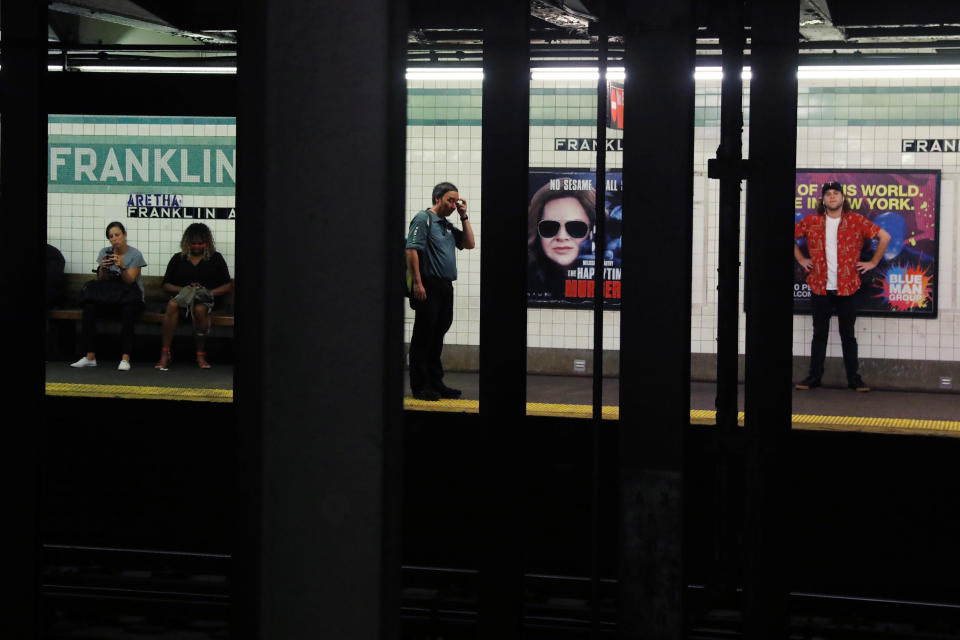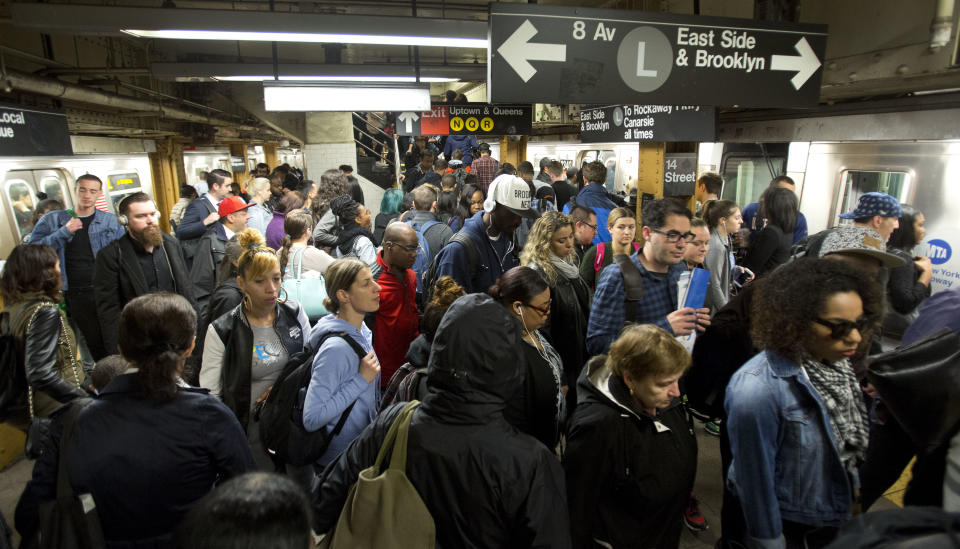America's largest city is facing a monumental subway crisis
This post has been updated with the results of Thursday’s gubernatorial Democratic primary.
Subway delays in the nation’s largest city cost up to $389 million in lost productivity each year, according to the Office of the New York City Comptroller in October 2017, and city officials are increasingly sounding the alarm.
The problem has gotten worse since the comptroller data was collected in 2016. Naturally, transit dysfunction has become a central component of Thursday’s gubernatorial primary vote in the city.
“Our subway system is the backbone of our economy,” New York City Comptroller Scott Stringer said in a statement to Yahoo Finance. “That means with every delay, there aren’t just lives affected — there’s an economic consequence.”

‘It was in a state of emergency long before’
According to the “State of the Subways Report Card” for 2016 by the NYPIRG Straphangers Campaign, 16 subway lines worsened in terms of regularity in comparison to only four that improved.
In June 2017, Gov. Andrew Cuomo declared a state of emergency for the subways. He signed an executive order, pledging $1 billion for improvements. However, few improvements have been made since then.
Cynthia Nixon, who lost to Cuomo in Thursday’s primary, made fixing the MTA one of her main campaign issues.
Subway delays in the nation’s largest city cost up to $389 million in lost productivity each year, according to the Office of the New York City Comptroller in October 2017, and city officials are increasingly sounding the alarm.
“Frankly, it was in a state of emergency long before Gov. Cuomo finally declared it one,” Nixon’s campaign told Yahoo Finance in an email. The statement cited declining subway performance, delays becoming increasingly worse, slow-moving trains and poor on-time performance.
Earlier this year, the Wall Street Journal reported that an overhaul of the city’s subway and bus systems would take about 15 years and cost an estimated $43 billion.
Nixon says that she would “tax the rich to fix the subway.” Governor Cuomo’s office did not respond to multiple requests for comment.

‘The transit system is the lifeblood of the city’
Marc Molinaro, the Republican nominee who will face Cuomo on Nov. 6, recently released an MTA revitalization plan. He told Yahoo Finance that if elected, he intends to make the subway system “immediately” respond to the people.
“The transit system is the lifeblood of the city and is in a death spiral, both financially and structurally,” Molinaro said. “It’s been in a rate of steady decline for about the last seven years.”
Molinaro attributes the struggles of the MTA to the ineffectiveness of Gov. Cuomo. “The governor hasn’t provided the appropriate level of leadership,” the candidate said. “He allowed the misdirection of funds to projects that either have nothing to do with transit or have more to do with vanity.”
But how does he plan to pay for the overhaul? Some of his suggestions include congestion pricing, an MTA commuter payroll tax and the use of value capture. Molinaro says he would also explore the feasibility of public-private partnerships and finding a way for state, federal and local governments to agree on contributing.
‘We need to get started, now’
New York City’s subway on-time performance stands at 58.1%, according to figures for January of this year, in stark contrast to the Washington Metro system (85.7%), Chicago’s CTA (95%), and Atlanta’s MARTA system (96.7%).

According to the 2017 report, the 5 line was hit the hardest with Worst-Case Major Delays, costing $31.5 million in lost productivity (followed by the 7, A and F trains). The 5 line runs north to south from the Bronx, through Manhattan and into Brooklyn.
“The longer we wait to tackle the fixes, the worse it will be,” Nixon said. “We need to get started, now. The Governor has yet to commit to a funding source for the needed fixes. A legislative session just passed without any action on the issue.”
‘Subways are also New York’s bloodline’
Aside from a millionaires’ tax, Nixon’s plans for funding included a polluter fee, rebates for low-income drivers, charging private cars and trucks to drive in Manhattan’s Central Business District and giving drivers far from transit a break.
“While Cuomo has tried to push the responsibility onto others, the governor of New York is legally in charge of the subways,” Nixon said.
Nixon argues that a decline in subway performance can not only hurt the MTA’s finances, but they can also “increase street congestion and stall the city’s economic success as it competes against global cities with better transportation networks.”

Annual subway ridership has declined since the comptroller data was analyzed in 2016. It fell by 0.3% that year and by 1.7% in 2017. The cost is currently $2.75 per ride.
According to the New York Times, subway and bus revenue in the first part of this year was $54.8 million (or about 3%) less than projected in 2017. This is partially due to the fact that more people are turning to ride-sharing services like Uber and Lyft.
“From an economic perspective, subways are also New York’s bloodline,” Nixon said. “When they don’t function, the low-income residents get hurt worst of all.”
‘This isn’t a choice — it’s a must’
The subways need to be fixed to improve both quality of life and New York’s economy, according to the statement from Stringer, the New York City comptroller.
The L line — which runs from the west side of Manhattan to the east side of Brooklyn — will be closed for five years to repair damage caused by Superstorm Sandy in 2012. Stringer sees the L train shutdown, which begins in April 2019, as a necessity.

“Repairing the subway system is absolutely essential to fixing our crisis, and it’s encouraging that the MTA is taking these repairs seriously,” Stringer said. “This is a challenge that did not start overnight and won’t be fixed overnight.”
He added: “There isn’t one New Yorker who doesn’t think we’re in a crisis, and our analysis shows there is a lot at stake when the subway system decays. This isn’t a choice — it’s a must. The future of this city and [the] fortunes of our economy are tightly linked to the functioning of our subway system.”
Have a rant about the subway? We’d like to hear it. Email your thoughts to [email protected].
Follow Adriana on Twitter.
Read more: Planes are ridiculously crowded these days, and a pilot explains why
